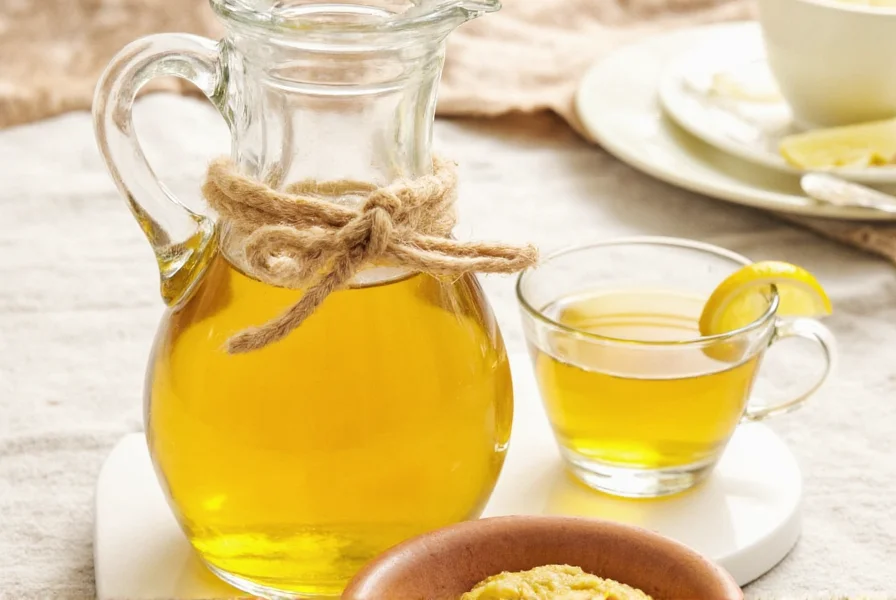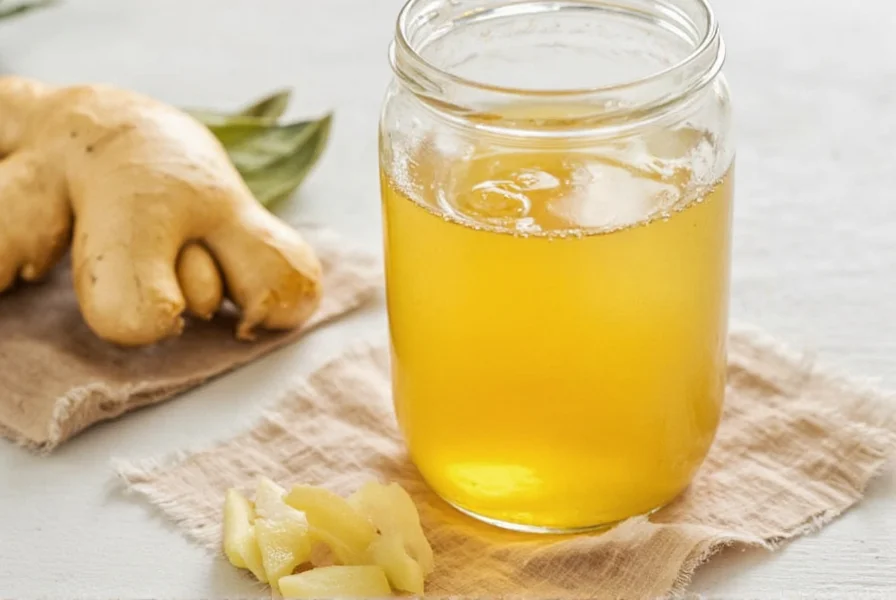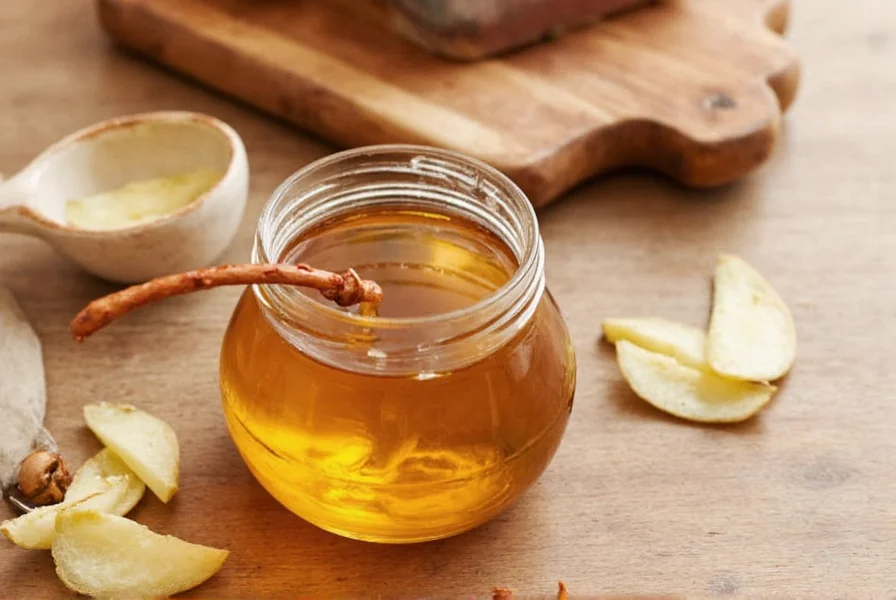Ginger simple syrup transforms ordinary beverages into extraordinary experiences with its distinctive spicy warmth. Unlike regular simple syrup, this ginger-infused version adds complex flavor dimensions while maintaining the sweetening function essential in mixology. The magic happens when fresh ginger's volatile oils and pungent compounds meld with sugar and water during gentle simmering, creating a balanced sweet-spicy elixir that elevates both alcoholic and non-alcoholic drinks.
The Essential Ginger Simple Syrup Recipe
Creating professional-quality ginger simple syrup requires attention to ingredient ratios and cooking technique. While variations exist, the foundational method delivers consistent results every time:
| Ingredient | Measurement | Preparation Notes |
|---|---|---|
| Fresh ginger root | 8 oz (225g) | Peeled and finely grated (use a microplane) |
| Granulated sugar | 8 oz (225g) | White cane sugar preferred |
| Filtered water | 8 oz (240ml) | Cold, chlorine-free |
Step-by-Step Preparation
- Peel and finely grate fresh ginger using a microplane grater for maximum surface area
- Combine grated ginger, sugar, and water in a non-reactive saucepan
- Bring to a gentle simmer over medium heat (do not boil vigorously)
- Reduce heat to low and simmer uncovered for 15-20 minutes
- Remove from heat and let steep for 30 minutes
- Strain through a fine-mesh sieve lined with cheesecloth
- Cool completely before bottling
The simmering time directly impacts flavor intensity—15 minutes yields a bright, forward ginger note perfect for delicate cocktails, while 20 minutes creates a deeper, more robust flavor ideal for spirit-forward drinks. Always use fresh ginger rather than ground powder for superior flavor clarity and heat control in your homemade ginger simple syrup.

Storage and Shelf Life Considerations
Proper storage determines how long your ginger syrup maintains peak quality. When stored correctly in a sterilized glass bottle:
- Refrigerated: 2-3 weeks (ideal for most home users)
- Room temperature: 1 week (not recommended for long-term storage)
- Freezer: 3-4 months (thaw before use)
Signs of spoilage include cloudiness, mold growth, or sour smell. The high sugar content acts as a natural preservative, but fresh ginger introduces organic material that eventually degrades. For extended shelf life without refrigeration, increase the sugar ratio to 2:1 (sugar to water), though this creates a thicker syrup better suited for certain cocktail applications.
Versatile Applications in Beverages and Cooking
Ginger simple syrup shines across multiple culinary domains. Professional mixologists value it as a foundational ingredient for balancing sweet and spice in craft cocktails:
Cocktail Applications
- Moscow Mule: 0.75 oz ginger syrup replaces traditional ginger beer for controlled spice level
- Ginger Margarita: 0.5 oz added to classic margarita recipe for spicy citrus complexity
- Dark 'n' Stormy Variation: Creates consistent ginger flavor without carbonation issues
- Non-alcoholic Ginger Fizz: 1 oz syrup + 3 oz soda water + lime juice
Unlike ginger beer which varies in carbonation and sweetness between brands, homemade ginger simple syrup provides consistent flavor intensity crucial for recipe standardization. This makes it particularly valuable for home bartenders seeking professional results with ginger syrup for cocktails.

Advanced Variations and Customizations
Once you've mastered the basic ginger simple syrup recipe, these professional variations expand your flavor possibilities:
Flavor-Infused Variations
- Lemon-Ginger Syrup: Add 2 oz fresh lemon zest during last 5 minutes of simmering
- Spiced Ginger Syrup: Include 2 cinnamon sticks and 4 whole cloves during simmering
- Turmeric-Ginger Syrup: Add 0.5 oz fresh turmeric (grated) for earthy complexity
- Chili-Ginger Syrup: Infuse with 1 small Thai chili for spicy-sweet heat
The ginger-to-sugar ratio significantly impacts final applications. For subtle background notes in delicate drinks, use a 0.5:1 ginger-to-sugar ratio. For bold ginger presence in spirit-forward cocktails, increase to 1.5:1. Always adjust to taste after straining, as ginger potency varies by season and growing conditions—this crucial detail separates amateur attempts from professional-grade ginger simple syrup.
Troubleshooting Common Issues
Even experienced makers encounter these challenges with ginger syrup preparation:
| Issue | Probable Cause | Solution |
|---|---|---|
| Cloudy syrup | Insufficient straining | Double-strain through cheesecloth |
| Weak ginger flavor | Under-simmered or old ginger | Simmer 5-10 minutes longer or use fresher ginger |
| Overpowering heat | Too much ginger or over-simmered | Dilute with simple syrup or reduce simmer time |
| Syrup crystallizes | Overcooked or improper sugar ratio | Add small amount of water and reheat gently |
Remember that ginger's pungency comes from gingerol compounds which transform during cooking. Gentle simmering preserves bright top notes, while longer cooking develops deeper, warmer tones through gingerol conversion to zingerone. This chemical transformation explains why simmer time dramatically affects final flavor profile in your ginger simple syrup preparation.











 浙公网安备
33010002000092号
浙公网安备
33010002000092号 浙B2-20120091-4
浙B2-20120091-4